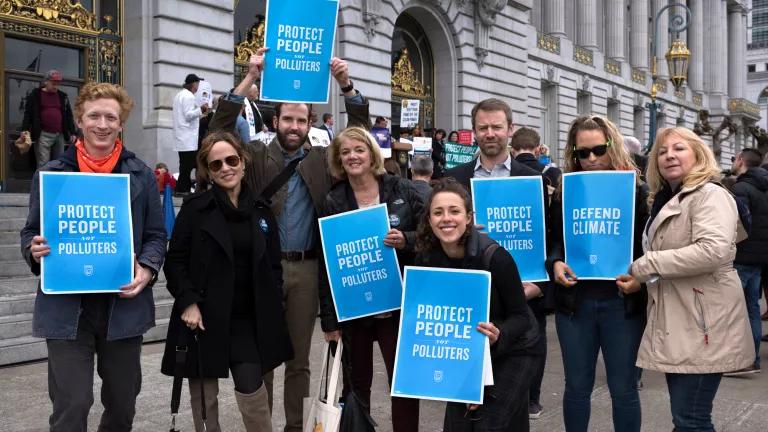Struggling Renters Need Relief, Rental Assistance Can Help

Learn more about NRDC’s response to COVID-19.
For many of us, the beginning of a new month means that our rent is due. Typically, these monthly payments put a strain on 21 million cost-burdened renter households that pay 30 percent or more of their income in housing and utility costs. That’s almost half of America’s renting households but with the COVID-19 pandemic leaving millions of people jobless as well as concerned about their health, rent payments will put an even greater strain on tenants and building owners this month.
There is no doubt that the current health and economic crisis is having a devastating impact on our nation. For previously under-resourced Americans and those now unexpectedly entering that category, paying for rental housing is a major concern. Fortunately, federal money has already been allocated that could be used to help alleviate the burden.
The extent of the problem
A New York Times article reported data tracking of rent payments across the country that showed “through the first five days of April, 31 percent of tenants had so far failed to pay their rent, compared with 18 percent in the same period a year ago,” and May is projected to look even worse as workers continue to be laid off. Leaders at the federal, state, and local levels need to take quick, decisive action to protect existing and newly low-income renters from displacement, and to alleviate their rent burdens during the COVID-19 crisis and in the recovery period that follows.
Energy Efficiency for All (EEFA), a project dedicated to bringing energy efficiency into affordable housing and that NRDC is a partner in, has been tracking policy responses to the COVID-19 pandemic. As a part of their initial COVID-19 emergency responses, many states and cities passed temporary eviction moratoria barring landlords from displacing tenants unable to pay rent due to direct impacts of COVID-19. These moratoria provide a number of short-term benefits to tenants and rental housing owners.
However, even with these benefits, a moratorium on eviction alone falls short because it cannot alleviate the long-term crisis caused by:
- Piled-up late payments,
- Lost income, and
- Risk of eviction once the COVID-19 emergency ends.
Additionally, many building owners and managers are unable to cover the cost of a sudden change in income because they rely on rent payments to operate their buildings, make necessary improvements, and pay their staff.
Policymakers need to act now to incorporate rental assistance, in addition to eviction moratoria, to protect renters and rental housing owners from long-term financial burdens later. They should consider viable methods for distributing assistance payments, such as through direct payments or vouchers to rental housing owners and managers. Policymakers should also consider ways that existing assistance programs can be expanded to expedite relief payments.
A potential solution
Federally, the CARES Act, the $2 trillion fiscal stimulus bill enacted in late March to respond to the COVID-19 pandemic, provided over $12 billion in funding for critical Housing and Urban Development (HUD) programs to protect and assist renters and building owners living in HUD-assisted housing. This funding includes $5 billion in Community Development Block Grants (CDBG) that will be distributed to states and cities using a HUD formula and based on COVID-19 risk. According to a fact sheet by EEFA partner the National Housing Trust, “CDBG funds are provided to both state governments and directly to some local governments to be used to improve housing, living environments, and economic opportunities, principally for persons with low and moderate incomes.”
A study from the National Low Income Housing Coalition estimates that the U.S. needs to invest up to $100 billion in emergency rental assistance in order to protect the most cost-burdened renters. Because of the range of eligible CDBG activities, many housing advocates--including our EEFA state coalition partners--are calling on states and cities to use these funds to create emergency rental assistance programs to support renters impacted by COVID-19 related hardships.
EEFA state coalitions are sending letters to their state leaders urging them to use their CDBG funds “to provide rental assistance to ensure that impacted families can remain stably housed during and after the COVID-19 crisis.” These letters lay out four key benefits of expanding or creating new rental assistance programs:
- Emergency programs can alleviate some of the mid- to long-term challenges that eviction moratoria alone fail to address. Eviction moratoria may effectively allow renters more time to pay rent, but they do not remove the obligation to pay rent at some point in the future. Rental assistance can relieve this financial burden by reducing the amount of late rent payments renters will owe later.
- Rental assistance benefits rental housing owners, who may rely on timely rent payments as a regular source of income, to continue to operate their buildings safely.
- Such assistance will also benefit the local economy because both renters and building owners will be better equipped to use their limited income for other needs, like food and medicine. Additionally, building owners will be able to continue employing staff who provide essential services.
- New and expanded programs will protect renters who are not currently recipients of federal rental subsidies.
You can find the EEFA state coalitions’ letters on EEFA’s Policy Responses to COVID-19 webpage. We’ve also released an EEFA Pandemic Response Guide to help local, state, and federal leaders prioritize health and safety in their COVID-19 policy responses. Along with measures to protect housing stability, EEFA is recommending policies that ensure access to essential utility services, protect vulnerable workers, expand access to phone and internet services, and prioritize the remediation of unhealthy housing.
In order to adequately mitigate the huge costs and consequences of the COVID-19 crisis for renters, policymakers at the local, state, and federal levels must address short- and long-term economic impacts. Implementing rental assistance programs that complement existing eviction moratoria is a critical step in protecting housing and economic security.



